If you’re a cat owner, you’ve probably heard the term “indoor cat food” before. But What Does Indoor Cat Food Mean? And why is it important to choose the right food for your indoor cat?
The term “Indoor Cat Food” is used to describe cat foods designed for cats who live indoors. In this article, I will explore the meaning of indoor cat food, the nutritional needs of indoor cats, and some of the best indoor cat foods on the market.
Whether you’re a new cat owner or a seasoned pro, understanding indoor cat food can help ensure that your feline friend is healthy, happy, and well-nourished. So, let’s dive in and learn more about what indoor cat food is all about.
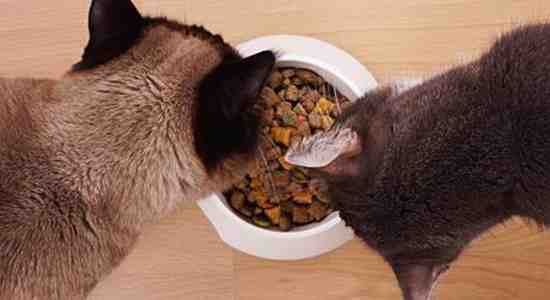
Table of Contents
What does indoor cat food mean?
Indoor cat food is a type of cat food that is formulated specifically for the unique nutritional needs of cats that live primarily indoors.
Indoor cats tend to have a more sedentary lifestyle compared to outdoor cats, which can lead to weight gain and other health issues if their diet is not adjusted accordingly.
Indoor cat food typically has a lower calorie content and is higher in protein, fiber, and other essential nutrients to help indoor cats maintain a healthy weight, support their digestion, and promote overall wellness.
In addition to their nutritional needs, indoor cats also have different lifestyle requirements compared to outdoor cats. For example, they may need more environmental enrichment, such as toys and scratching posts, to keep them mentally and physically stimulated.
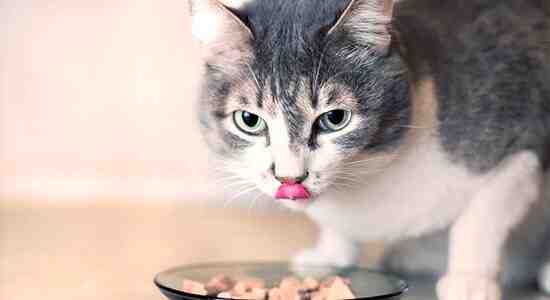
Some indoor cat foods may include added ingredients like antioxidants and omega-3 fatty acids to support brain and eye health, as well as skin and coat health.
Overall, indoor cat food is designed to meet the specific needs of cats that spend most of their time indoors, helping them stay healthy, happy, and thriving.
What do indoor cats eat?
According to the experts, indoor-only cats require a diet that contains no fewer than 26% crude protein and at least 4% fat. Indoor plus cats need food containing 30-35% crude protein and 6-8% fat. Such diets are usually found in dry foods designed for feline health.
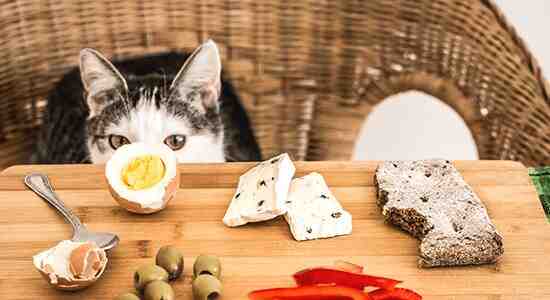
For those who have been feeding their cats a regular diet during the day, be sure to switch them over slowly as it can cause stomach upsets in some cases. Just like humans, cats can be particular about their food, so if your cat does not enjoy the new taste, try mixing it with some of its current food to entice it.
Best 5 Indoor Food For Your Cat
There are many different brands and types of indoor cat food available, so it’s important to choose one that meets your cat’s specific nutritional needs and preferences.
Here are five of the best indoor cat food options to consider:
1. Hill’s Science Diet Indoor Dry Cat Food:
This popular brand of indoor cat food is made with high-quality protein, fiber, and natural ingredients to support healthy digestion, weight management, and immune system function. It also contains added antioxidants, vitamins, and minerals to promote overall health and wellness.
2. Purina ONE Indoor Advantage Adult Dry Cat Food:
This indoor cat food is specially formulated with a balance of protein and fiber to support healthy weight and digestion. It also contains real turkey and other natural ingredients for a delicious taste that cats love.
3. Blue Buffalo Indoor Health Adult Dry Cat Food:
This indoor cat food is made with high-quality protein from real chicken, whole grains, and vegetables to support healthy digestion, weight management, and immune system function. It also contains added vitamins and minerals for overall health and wellness.
4. Wellness Complete Health Indoor Dry Cat Food:
This indoor cat food is made with high-quality protein, fiber, and natural ingredients to support healthy digestion and weight management. It also contains added antioxidants and vitamins to promote overall health and wellness.
5. Royal Canin Indoor Adult Dry Cat Food:
This indoor cat food is specially formulated with a balance of protein and fiber to support healthy weight and digestion. It also contains added antioxidants and prebiotics to support immune system function and digestive health.
Remember to always consult with your veterinarian to determine the best diet for your cat’s individual needs and health condition.
Why should I feed my indoor cat grass?
Indoor cats are prone to various health issues, which is why it’s important to feed them a species-appropriate diet.
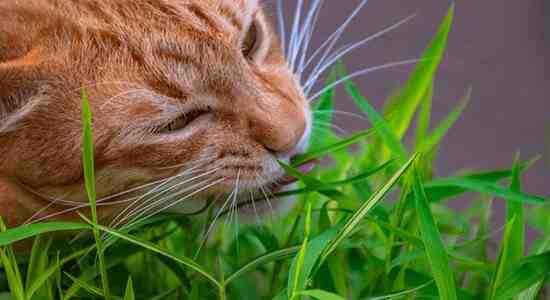
Organic grass can aid in digestion and promote healthy gut flora. The consumption of the plant fiber found in cat grass helps with hairballs and constipation while also controlling diarrhea.
Vegetables often turn off cats, but many cats love catnip, which also comes from the same family of plants. It can be a great way to get your cat interested in eating veggies!
Is canned food good for indoor cats?
Canned food is not necessarily bad for indoor cats, but it’s important to remember that most commercial brands are high in salt and sugar.
Moreover, they are not as beneficial for cats as dry food because they are lower in protein and other nutrients. For these reasons, use the canned food as a treat or mixer to entice your cat into eating their new diet.
What’s The Difference Between Indoor Cat Food And Regular Cat Food?
The main difference between indoor cat food and regular cat food is the specific nutritional needs of indoor cats versus outdoor cats. Here are some key differences:
1. Calorie content:
Indoor cats tend to be less active than outdoor cats, so they require fewer calories. Indoor cat food typically has a lower calorie content compared to regular cat food.
2. Protein content:
Indoor cats still require a healthy amount of protein in their diet, but they don’t need as much as outdoor cats who need the extra energy to be active. Indoor cat food usually has a slightly lower protein content compared to regular cat food.
3. Fiber content:
Since indoor cats are less active, they may be more prone to constipation and hairballs. Indoor cat food often contains higher levels of fiber to support healthy digestion and prevent hairballs.
4. Nutrient content:
Indoor cat food may contain added nutrients like antioxidants, omega-3 fatty acids, and L-carnitine to support a healthy weight, brain and eye health, skin and coat health, and overall wellness.
Overall, indoor cat food is designed to meet the specific needs of cats that live primarily indoors, while regular cat food is designed for cats that spend more time outside and may have different energy and nutritional requirements.
However, it’s important to note that not all indoor cat foods are created equal, so it’s important to choose a high-quality brand that meets your cat’s specific needs.
What is the best cat food for indoor cats?
If you have an active indoor cat, they would love to chase after toys and consume food with high protein levels and minimal carbohydrates.
In this case, it’s important to look for a food with a high percentage of protein while keeping carbs low. Instinct by Nature’s Variety is a great choice because it contains real chicken and no grains or gluten, which helps with sensitive stomachs!
In addition, it closely mimics what kitties would eat in the wild. Some other foods you can try for your active indoor cat include:
- Instinct by Nature’s Variety (grain free)
- Orijen (grain free)
- Wellness Core (grain free)
Do indoor cats need indoor cat food?
Indoor cats do not necessarily need indoor cat food because they can eat regular cat kibble as well. However, we recommend that you feed them a dry food diet because it’s low in calories, and this will help prevent them from becoming overweight or developing diabetes.
Can indoor cats eat outdoor food?
Cats kept indoors should never eat food left outside by humans or other animals because it can be contaminated with bacteria from feces.
In addition, any food that is left out in the open attracts pests such as ants, flies, and mice. This creepy crawlies can carry parasites or spread diseases that can make your cat sick.
What is the difference between indoor and outdoor cats?
Outdoor cats are much more likely to survive if they contact humans or other animals because they can hide and defend themselves.
Moreover, outdoor cats tend to hunt down their food, while indoor kitties eat the same food day after day, which is not good for them. Indoor kitties can get bored of their food, and this is why it’s important to think of ways to spice up their meal with healthy, tasty treats.
For indoor cats, you’ll need good-quality dry cat food every day. Some other foods your furry friend might enjoy occasionally are:
- Fresh or frozen chicken (remove skin); bone-in or boneless
- Lean turkey breast (remove skin) or ground turkey meat
- Tuna packed in water (no additives) – gutted and deboned
Do indoor cats need wet food?
In the wild, cats tend to eat their prey, which means that they will eat the meat and organs of small animals such as mice. Although it’s possible to mimic this behavior by cooking your cat food, we recommend that you feed them high-quality dry food instead.
However, if you want to give your indoor kitty some wet food occasionally, try to choose ones with high protein levels because these contain fewer carbs than other wet food types. Some moist foods that are considered healthy for indoor cats include:
- Instinct by Nature’s Variety (grain free)
- Wellness Core (grain free)
Do indoor cats need kitten food?
There isn’t a single ‘one size fits all’ diet when it comes to feeding your new furball because cats age differently and have different nutritional requirements. However, we recommend that you feed your kitty high-quality food from the very start.
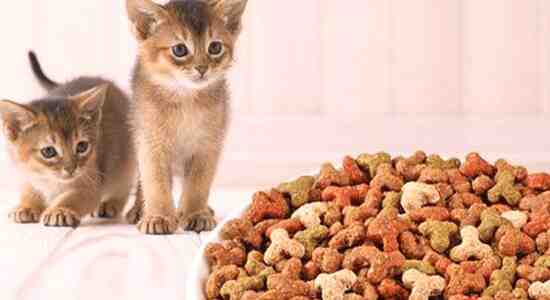
In particular, we recommend that you choose an indoor cat food with a higher protein percentage to support healthy muscle mass and weight management. In this case, it’s best to look for a food that’s specifically formulated for kittens from 8 weeks of age.
Can indoor cats eat dry cat food?
Cats in the wild will not be able to find water if their usual supply has dried up, which is why they must have access to fresh, clean water at all times. For indoor kitties, you can keep a bowl of water by their food tray, which will be a good place for them to drink.
In addition, you can also provide your furry friend with a pet fountain to encourage them to drink more water.
The Bottom Line
It’s not surprising that more and more people are turning to indoor cat food. As our homes become smaller, we can’t always provide the space for cats they need.
Indoor cat food is designed with this in mind-it provides all of the essential nutrients without needing a lot of room or expensive outdoor equipment.
This blog post has given you some insight into what an indoor kitty needs (and doesn’t). If you’re thinking about getting one yourself but want to know how best to care for it, let us help! Our team will be happy to answer any questions you have about caring for your new pet.

Hi there! My name is Koushik; I am a cat lover. I specialize in writing about pet care & food. I have a wealth of knowledge on cat food niches and related subjects. I have worked in the pet industry for over 5 years and am passionate about helping cat owners provide the best care for their furry friends. With knowledge of cat food and nutrition, I aim to share their insights and help cat owners navigate the world of cat food niches. I enjoy playing with my two cats, reading, and exploring new cat food brands in my free time.
4 thoughts on “What Does Indoor Cat Food Mean: Best 5 Indoor Food For Your Cat”